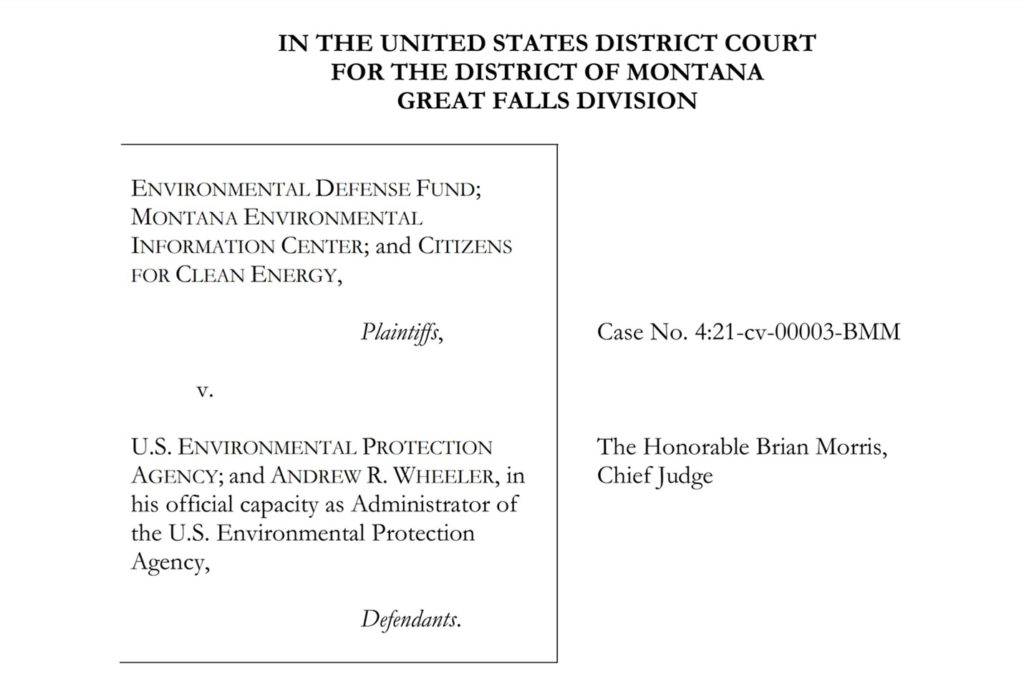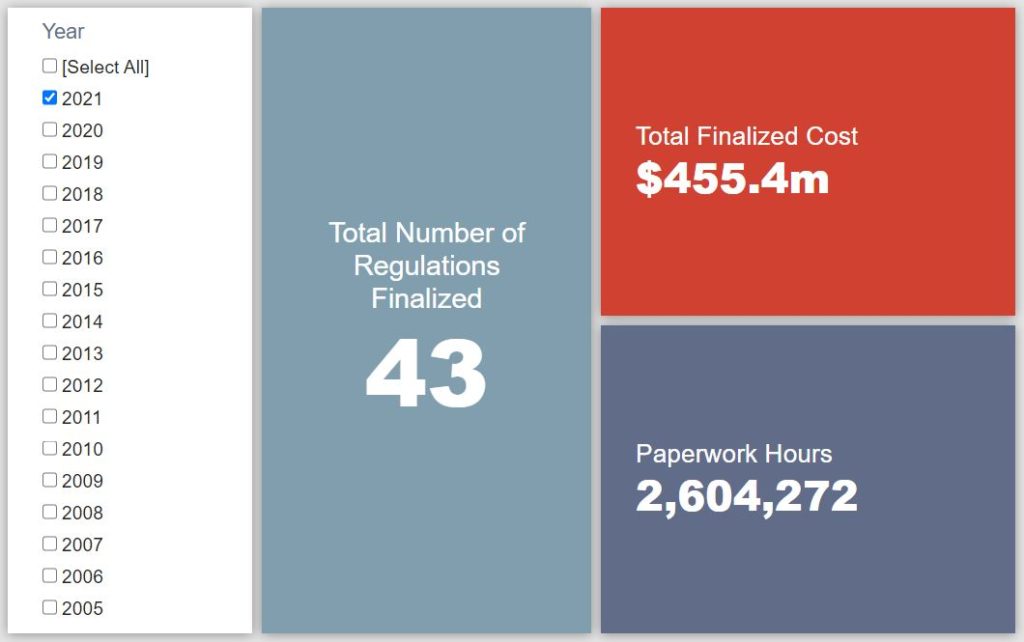Week in Regulation
February 8, 2021
Slow Start to February
With the regulatory freeze memo still in place and the Biden Administration still getting its bearings, there was limited activity in the pages of the Federal Register last week. No individual rulemaking had an economic impact exceeding $3 million. Perhaps the most consequential regulatory development – as discussed further in This Week’s Regulatory Picture – was a court decision striking down one of the more notable final actions of the Trump Administration. Across all rulemakings, agencies published $4.9 million in total net costs and added 51,268 hours of annual paperwork.
REGULATORY TOPLINES
- Proposed Rules: 23
- Final Rules: 53
- 2021 Total Pages: 8,526
- 2021 Final Rule Costs: $455.4 million
- 2021 Proposed Rule Costs: -$8.1 billion
NOTABLE REGULATORY ACTIONS
As alluded to above, there was not much in the way of rules with any measurably significant impact. The costliest rule was a routine Federal Aviation Administration “airworthiness directive” that brought $2.2 million in estimated costs. The bulk of the week’s new paperwork burdens comes the 42,864 additional hours potentially imposed by a Federal Deposit Insurance Corporation proposed rule.
TRACKING THE ADMINISTRATIONS
As we have already seen from executive orders and memos, the Biden Administration will surely provide plenty of contrasts with the Trump Administration on the regulatory front. And while there is a general expectation that the new administration will seek to broadly restore Obama-esque regulatory actions, there will also be areas where it charts its own course. Since the American Action Forum’s RegRodeo data extend back to 2005, it is possible to provide weekly updates on how the top-level trends of President Biden’s regulatory record track with those of his two most recent predecessors. The following table provides the cumulative totals of final rules containing some quantified economic impact from each administration through this point in their respective terms.
![]()
The paucity of notable actions last week was in line with past “Week Two” trends. While there was some shifting compared to last week’s data – particularly on the paperwork side – the orders of magnitude largely remained unchanged. This consistency in the data from week to week suggests that regulatory freeze memos (which all three administrations implemented) are generally successful in constraining new rulemakings in the early weeks of an administration. An important aspect to monitor going forward will be how long it takes this freeze period to thaw.
THIS WEEK’S REGULATORY PICTURE
This week, a Trump Administration midnight rule gets the axe from a federal court.

On February 1, a federal court vacated and remanded a rule issued by the Trump Administration’s Environmental Protection Agency (EPA) that set standards for the use of scientific studies in the agency’s rulemaking process.
The rule, titled “Strengthening Transparency in Pivotal Science Underlying Significant Regulatory Actions and Influential Scientific Information,” formalized how the agency was to treat dose and response data underlying significant regulatory actions. The rule was praised by supporters as necessary to make scientific studies used to justify regulations more transparent. Critics panned the rule as an attempt to prevent certain studies from being used to form the basis of regulations.
Among the critics was the Biden Administration. The rule was specifically mentioned in Executive Order (EO) 13,990 as in need of review in order to determine if EPA should suspend, revise, or rescind the rule. All of these options would have required EPA to go through a rulemaking process to justify reversing or modifying the Trump Administration rule.
The U.S. District Court for the District of Montana vacated the rule at the Biden EPA’s request just a few days after issuing an opinion that the rule was substantive, rather than a rule of internal agency procedure.
The upshot is that now the Biden Administration does not have to justify repealing the rule through a rulemaking procedure. It could just determine that it does not want to promulgate a science rule and withdraw it completely.
The court ruling marks the second major Trump Administration EPA rule to be vacated and remanded in the last three weeks. On January 19, a federal court ruled similarly on the Affordable Clean Energy rule.
TOTAL BURDENS
Since January 1, the federal government has published $7.7 billion in total net cost savings (with $455.4 million from finalized rules) and 8.9 million hours of net annual paperwork burden reductions (with 2.6 million hours in increases from final rules).












